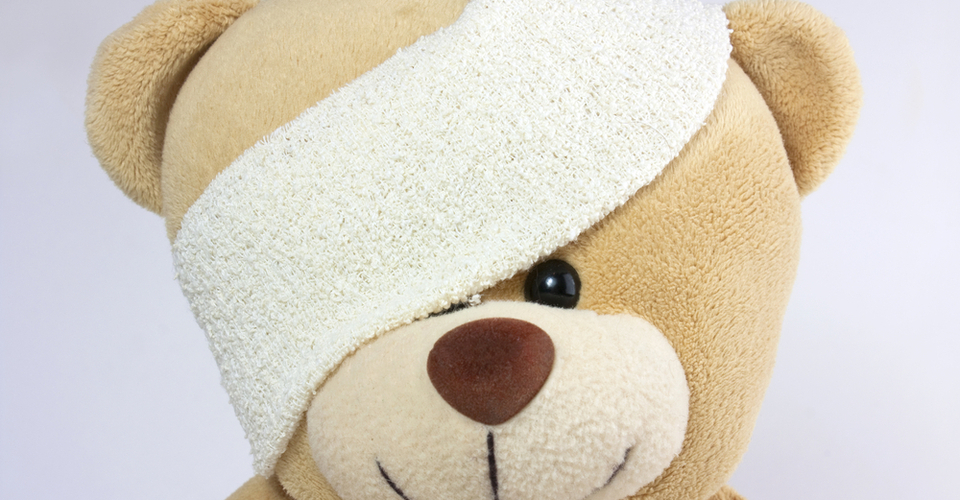Whether your kids are playing in summer sports leagues or training for their school sports tryouts, eye safety is an important part of staying safe in the field and on the court. In honor of the upcoming Children’s Eye Health and Safety Month in August, today’s blog post reviews eye safety best practices and how to respond to a child with an eye injury.
For high-risk sports such as baseball, basketball, hockey, lacrosse, and any sport with the potential for eye injuries, the National Eye Institute recommends that:
-
Everyone should wear protective eyewear.
-
Ordinary prescription glasses, contact lenses, and sunglasses won’t protect you from injuries. Most protective eyewear can be made to match your prescription.
-
For the best protection, use eyewear made of ultra-strong polycarbonate.
-
Choose eyewear specifically made for your sport and make sure it fits comfortably on your face.
Responding to a Child’s Eye Injury
Small foreign objects on the surface of an eye will cause irritation and discomfort. Encourage the child not to rub the affected eye. Have the child blink several times to see if the eyelid or tearing can remove the object naturally.
If not, flush the eye with tap water or saline eyewash solution. Flush outward from the nose side of the eye. If pain continues or the child feels like something is still in the eye, cover the eye lightly with a gauze pad and seek professional medical care.
For objects that penetrate, or impale, the surface of the eye, prompt professional medical care is required. Quickly activate EMS.
Never try to remove an embedded object. Place a protective cover over the eye to prevent pressure on the object, such as a paper cup or cone. Because eyes move together, cover the uninjured eye with a pad and bandage over both eyes to prevent movement of the affected eye. Covering both eyes can be distressing; stay with the child, and calm, comfort, and reassure him or her to help reduce anxiety. Regularly assess the child until EMS personnel take over.
Remember, when responding to an injured child, using child-friendly communication techniques can help you effectively provide care. These include:
-
Maintaining a calm, confident tone while speaking to him or her.
-
Telling the child your name and ask for his or hers, then using his or her name during the course of your care.
-
Looking and talking to the child, involving him or her in making decisions.
Whenever a child is seriously ill or injured, a parent or guardian should be contacted as soon as possible. However, never delay calling EMS to do so. Call EMS immediately any time you recognize an emergency exists or you believe a child needs professional medical attention.
Emergency care instructors: Interested in training daycare providers or school-district personnel? Our ASHI Pediatric CPR, AED, and First Aid and MEDIC First Aid PediatricPlus CPR, AED, and First Aid for Children, Infants, and Adults programs are ideal for workplace or community training.* To learn more about becoming an ASHI or MEDIC First Aid Training Center, click the button below to download our Getting Started in Emergency Care Training with ASHI and MEDIC First Aid eBook.
* Some states require a review and approval of a program before being used to train childcare providers. Check the regulatory tool in the ASHI and MEDIC First Aid TC portal for state-specific childcare approval information.








.png?width=600&name=HSI-CTA-EmergencyCareTraining%20(1).png)











Comments